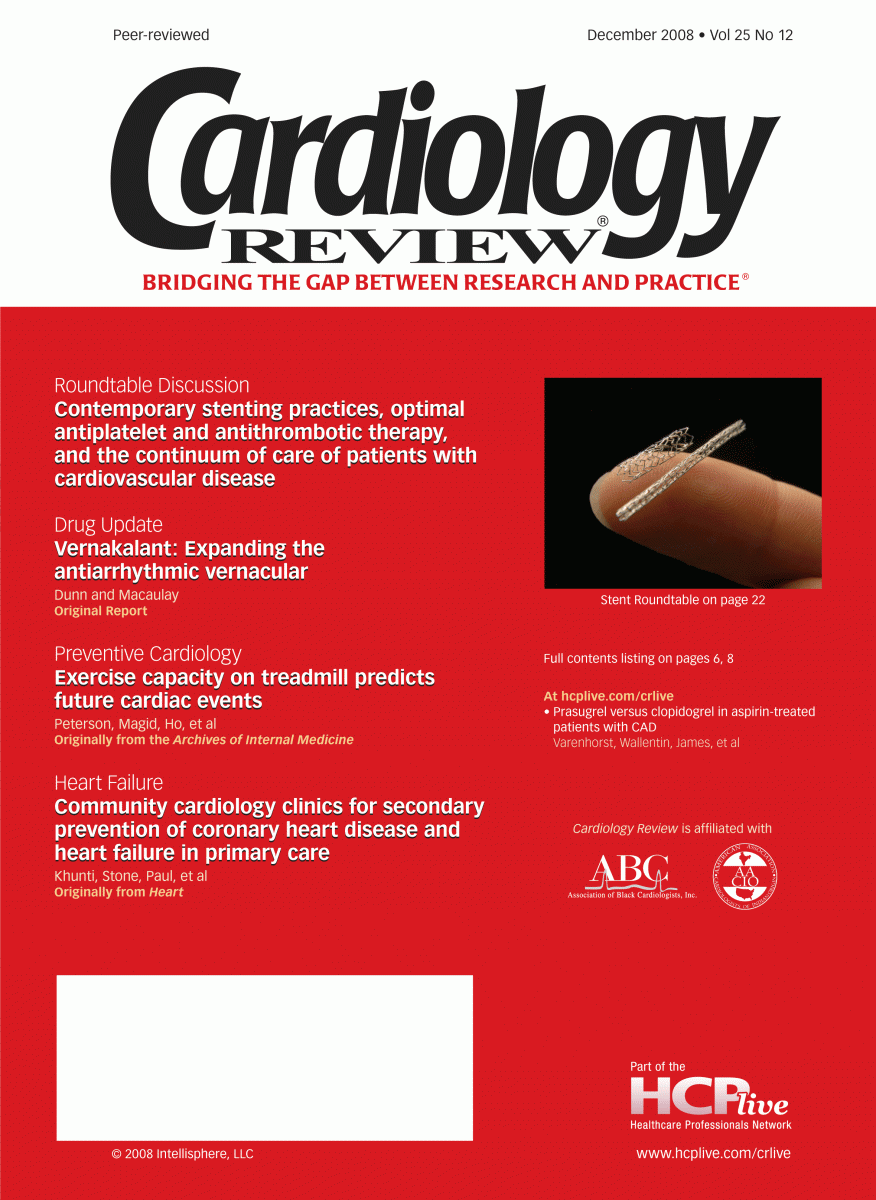Publication
Article
Cardiology Review® Online
The truth about DESs and other contemporary cardiology issues
Author(s):
The introduction of drug-eluting stents (DESs) in 2003 was a landmark development in the field of interventional cardiology.
The introduction of drug-eluting stents (DESs) in 2003 was a landmark development in the field of interventional cardiology. Several clinical trials demonstrated that DESs substantially reduced angiographic restenosis and the need for repeat target vessel revascularization compared with traditional bare-metal stents (BMSs). Based on these promising data, within 2 years of their introduction, DESs had captured more than 80% of the coronary stent market, and physicians started implanting DESs preferentially in the majority of patients with coronary artery disease (CAD).
Cardiology Review
In 2006, however, the BASKET—LATE (Basel Stent Cost-Effectiveness Trial–Late Thrombotic Events) and SCAAR (Swedish Coronary Angiography and Angioplasty Registry) investigators independently reported significantly worse clinical outcomes with DESs compared with BMSs. The primary concern with DESs became stent thrombosis, which is an uncommon but serious complication that often presents as death or myocardial infarction (MI), typically ST-segment elevation MI. Concerns regarding stent thrombosis and worse clinical outcomes led to a significant decrease in DES usage between 2006 and 2007. At the same time, intense clinical research was spurred to understand the biological effects of DESs and to compare the clinical outcomes of these stents with those of BMSs. Several prospective, rigorously conducted studies were reported in 2007, which reassured clinicians about the safety of DESs when used appropriately and with optimal antiplatelet therapy. In this issue of , a group of clinical thought leaders, including both invasive and noninvasive cardiologists, discuss appropriate use of DESs, concerns regarding restenosis and stent thrombosis, and optimal antithrombotic and antiplatelet therapies during percutaneous coronary intervention. The potential advantages of second-generation DESs; recent technological advances in the diagnosis and detection of CAD, including the role of computed tomography angiography; and the continuum of care in patients with vascular diseases are also discussed. I am hopeful clinicians will have many of their “real-life patient scenario” questions answered by the excellent insights provided by our panelists.
This issue also features an article by Dr Peterson and colleagues, who report that the prognostic importance of reduced exercise capacity for nonfatal coronary events is independent of demographic factors, clinical factors, and other exercise treadmill testing measures. Reduced exercise capacity may, therefore, identify patients in whom aggressive risk factor modification, further diagnostic testing, and close follow-up is warranted. Dr Whayne reviews this study and suggests that by aggressively managing identified cardiovascular risk factors, the quality and duration of patients’ lives may be prolonged.
In another article, Khunti and associates state that although coronary heart disease (CHD) and chronic heart failure (CHF) are common chronic conditions encountered in primary care, they are often poorly diagnosed and inadequately managed. The authors suggest that disease management programs delivered by specialized cardiology nurse practitioners can improve the treatment of patients with CHD and CHF in the primary care setting. In their review of this article,
Dr Baker and colleagues state that the study adds to the growing body of evidence supporting the ability of nurse practitioners to improve patient outcomes through organized chronic disease management clinics. They point out, however, that current reimbursement levels do not support such approaches. The articles by Drs Khunti and Peterson highlight the importance of appropriate early diagnosis and prevention in managing heart disease, which may be the most cost-effective way to treat this debilitating condition.






